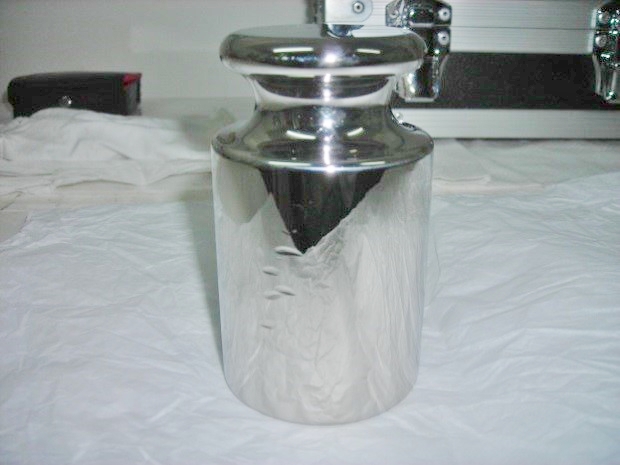Challenges to Developing Metrology in SIDS – The CARICOM Experience
- crosqblog
- on Jan, 08, 2020
- Category Demand for Quality
- Comments Off on Challenges to Developing Metrology in SIDS – The CARICOM Experience
Part 2 of “Developing Metrology in Small Island Developing States”
2. CHALLENGES
Though there are unique challenges in each country which rules out the possibility of a “one size fits all” approach, many of the National Metrology Institutes (NMIs) in CARICOM share similar challenges which can be resolved using regional initiatives. These common challenges are considered herein.
2.1 The Socio-Political Environment
As Developing States, the Governments of CARICOM SIDS have been predominantly focused on grappling with economic shocks from the rapid expansion of globalisation, addressing energy demands and burgeoning public debt. As a result, the development of Quality Infrastructure including metrology has not yet become a high political priority. Conversely, many of the Governments in advanced economies have seen the vital link between metrology and the manufacturing sector and as such, most of the advanced economies support the metrology programmes developed by their NMIs. These programmes are typically expensive to establish and maintain, yet they support breakthroughs in other fields of science and spur innovation in manufacturing thereby justifying the investment in the NMI.
The social environment within which CARICOM NMIs operate also contributes to weak support for the development of metrology due to the fact that the majority of citizens in CARICOM have low incomes and as a result are price-conscious versus quality conscious. With this weak push from policy makers, coupled with a weak pull from the public, Quality Infrastructure is usually forgotten until there is a crisis. However, there has been an increase in demand for calibrations and other QI services over the past five to ten years due to the increase in the number of companies in CARICOM that are implementing Quality Management Systems (QMS). These companies have recognised the role a functioning QMS plays in being more competitive in the international arena and also in overcoming the technical barriers to trade (TBTs) that are silently working against them. This need for traceable measurements has been largely driven by companies which are part of an international conglomerate, requirements from a franchisor or due to trade requirements with developed nations. It has been noted that the calibrations conducted for many of these companies are arguable more used to satisfy auditors rather than to improve the production process or quality of the final product.
The development of metrology is very resource-intensive and it has been accepted that the creation of a NMI requires significant monetary investment. The economic situation facing many CARICOM SIDS due to decreases in their sources of income and increasing debt has resulted in some countries finding it difficult to establish the industrial calibration services that are needed for national development and are also struggling to maintain the services that already exist. What makes the development of metrology even more challenging for SIDS is the fact that there is a limited or even declining amount of the other necessary domestic resources.
2.2 Human Resource Management
Critical to the success of any NMI is the hiring and retention of the scientists that are trained as metrologists. Within CARICOM there are no dedicated metrology programmes or training courses available at any of the region’s colleges or universities. As a result, graduates with a natural science or engineering background are hired and trained on the job as metrologists. This training comes at considerable cost to the NMI as training must be obtained either through courses available outside of the country or by contracting external metrology experts to conduct on-site training in the country. Notwithstanding these interventions and the increasing access to capacity building interventions from external sources such as the Inter-American Metrology System (SIM) and other NMIs, many CARICOM NMIs are challenged to retain the services of the professionals that they have trained. In the more industrialised CARICOM States, the small pool of scientists and engineers with a metrology background are highly prized by the manufacturing sector. This demand combined with the higher compensation packages available in industry has translated to a high rate of staff attrition at some NMIs. For example, one department in one CARICOM NMI that normally has twelve (12) metrologists on staff has lost seven (7) over the last five (5) years through normal means.
This high staff attrition rate in many NMIs has restricted the development of certain metrology quantities as persons are continuously being replaced.
In addition to the financial cost of repeatedly training new scientists, these NMIs do not have the opportunity to build a strong technical reputation within SIM because of the changing representation at Metrology Working Group (MWG) activities. The risk of jeopardising the national and regional metrology development plans is further exacerbated when the NMI is small and has only two or three metrologists on staff. This limited number of metrologists forces each to be proficient in a wide number of metrology quantities and when one of these metrologists leaves this strikes a severe blow to the national and regional development plans. This was the case at one of the smaller CARICOM NMIs where there was one (1) senior metrologist and one (1) junior metrologist who both resigned within the span of two (2) years to fulfil personal and family obligations. At the time of his departure, the competence of the junior metrologist was being developed using regional funds with the hope that he would one day become a regional resource in mass metrology.
2.3 Limited Client Base
From the establishment of the first NMIs in the late 19th century and throughout much of the 20th century, the NMIs of develop industrialised nations directly conducted calibrations for their industry clients. This changed in the 1970’s when the number of calibrations being conducted overextended the NMIs. This gave way for the creation of private calibration laboratories that would serve as the middlemen between the NMI and industry by providing calibrations directly to industry while obtaining their measurement traceability from the NMI. Although the number of calibrations done by the NMI would now be lower, each calibration done for the growing number of private calibration laboratory would serve as the reference for a large number of industrial calibrations [2]. As the number of private laboratories grew, prices fell and as a result each laboratory was spurred to increase its efficiency and competitiveness.
Similar to the early development of NMIs in advanced economies; the relatively new NMIs in CARICOM are now directly conducting industrial calibrations. However, with a small manufacturing sector in most CARICOM States there is very little potential for the workload of the NMIs to increase to the point of spurring the creation of national private calibrations laboratories. Without this bridge between the NMI and the industry client, the cost of establishing and maintaining each metrology quantity must be spread across the limited industrial clients. This limited client base makes the calibration costs comparatively higher than that offered by private calibration laboratories in developed countries. Even in the case where industrial clients in CARICOM are forced to use calibration services from outside the region they must bear either the freight costs to transport the artefacts or the travel and accommodation costs for the foreign metrologists to conduct in situ calibrations. This higher cost to the manufacturing sector in CARICOM contributes to the already high costs of production and operation potentially making Caribbean products less competitive.
2.4 Availability of Suitable Laboratory Infrastructure
The expansion of NMIs within the Caribbean sub-region of SIM (CARIMET) from legal metrology into industrial metrology means that metrology laboratories need to be established. These laboratories must be equipped with the requisite measurement standards and maintained within specific climatic requirements. The majority of CARIMET NMIs are presently housed in older buildings that were not designed with metrology in mind. These NMIs are currently in need of a significant capital investment in order to construct a new building or carry out significant retrofitting on the existing buildings. Efforts to establish mass and length metrology laboratories within CARIMET have highlighted a lack of the necessary heating, ventilating and air-conditioning (HVAC) expertise in the Caribbean. Most Caribbean companies offering HVAC services have experience providing solutions for offices but not for laboratories requiring such precise temperature and humidity controls.
The maintenance of these laboratories has also been a challenge to the NMIs mostly due to the unavailability of local technicians to service the equipment. Most metrology equipment is very intricate in nature involving technologies that are the proprietary right of the manufacturer. This usually means that maintenance and repairs must be done by specialist technicians located outside of the Caribbean. This significantly increases the cost to CARIMET NMIs as they must either ship the equipment to the manufacturer or pay for the technicians to travel to the NMI.
Another factor affecting the maintenance of the laboratories is the geography of CARICOM SIDS especially those in the Eastern Caribbean. Many of these NMIs are situated within low-lying coastal towns affected by the negative impacts of climate change. The increasing occurrence of natural disasters in some of these countries has significantly impacted national debt leaving the NMIs with diminished budgets. Even without this threat, the harsh salt air from the nearby sea reduces the usable life of equipment such as the condensers for the air-conditioning units.
2.5 Weak Regional Transportation Infrastructure
Development of metrology within CARICOM has also been affected by the limited transportation infrastructure in the region. Land based travel between CARICOM Member States is only limited to Guyana and Suriname, sea travel is limited to small ferries between certain countries mainly in the Eastern Caribbean and the cost of air travel is high. In some cases it is cheaper to travel to developed nations such as the United States, Canada, England and Germany rather than to other CARICOM countries. In the past this issue was a major obstacle to information sharing between NMIs and even with the advent of modern communication technology this high cost of travel increases the cost of technical cooperation between CARICOM NMIs. In recent years this lack of suitable inter-island transportation has resulted in significant damage to measurement artefacts being transported for calibration. With limited available commercial couriers, a number of CARIMET NMIs use international couriers only to find that their artefacts are destroyed during inspection at the couriers’ logistics hubs. This issue almost ended the first CARIMET Inter-Laboratory Comparison in Mass Metrology in 2010 and later was the reason for Guyana having to replace one of its national mass sets.

2.6 The Public Perception of the NMI as a Regulator
At independence most Caribbean SIDS inherited a system of weights and measures that was regulated by the Police. Post-independence Member States transferred these powers to the National Standards Bureaus and pursued a course of economic development which including preferential trade agreements and protectionist measures to promote the growth of their fledging manufacturing sectors. This national focus meant that the processes that were developed though similar still have elements that vary from Member State to Member State. From that time until the late 1990’s the National Standards Bureaus built a strong reputation as regulators through their active role in standards development and enforcement, legal metrology inspections and conformity assessment of products. This reputation of policing has however presented some drawbacks which have impacted the effectiveness of the development of metrology. Because of this reputation there is reluctance from private companies to share information about their operations or cooperate with the NMI which in the CARICOM context is the NSB. This has resulted in metrology services being developed that are underutilised in many countries because of reluctance on the part of the private sector to utilise the services of the NMI or due to limited market demand data.
2.7 Public Sector Culture
The culture of any organisation has a significant impact on its performance and on its employees. Organisational culture in this sense refers “to the climate and practices that organisations develop around the handling of people, or to the espoused values and credo of an organization” (Schein 2004). According to the classification of organisational culture proposed in Bradley and Parker’s (2001) Competing Values Framework (CVF) most CARICOM NMIs have a hierarchical culture emanating from being a part of the public service. This culture creates an internal focus and coupled with being regulators, the NMIs have inherited a culture of clients be required to come to them instead of them having to focus on their client’s demands. As a result, many NMIs do not have a good understanding of the actual demands of the market and many programmes are developed based on instructions from the political directorate, perceived demands or areas of interest to the NMI.

Additionally, the controlled structure of this organisational culture at many CARICOM NMIs coupled with the expensive artefacts and standards have created a fear of failure on the part of the metrologists. This is seen in reluctance on the part of some regional metrologists to experiment with the equipment, try new methods on their own, research or carry out operations outside of the established routine.
Reference
[2] Quinn, T., Kovalevsky, J. (2005). The development of modern metrology and its role today. Philosophical Transactions of the Royal Society A, 363(1834), p. 2307-2327, 2005.
[3] Schein, E. H. (2004). Organizational Culture and Leadership. San Francisco, CA, U.S.A.: Jossey-Bass Pg. 7
*Next – Part 3 – The Strategies to Developing Metrology within SIDS




